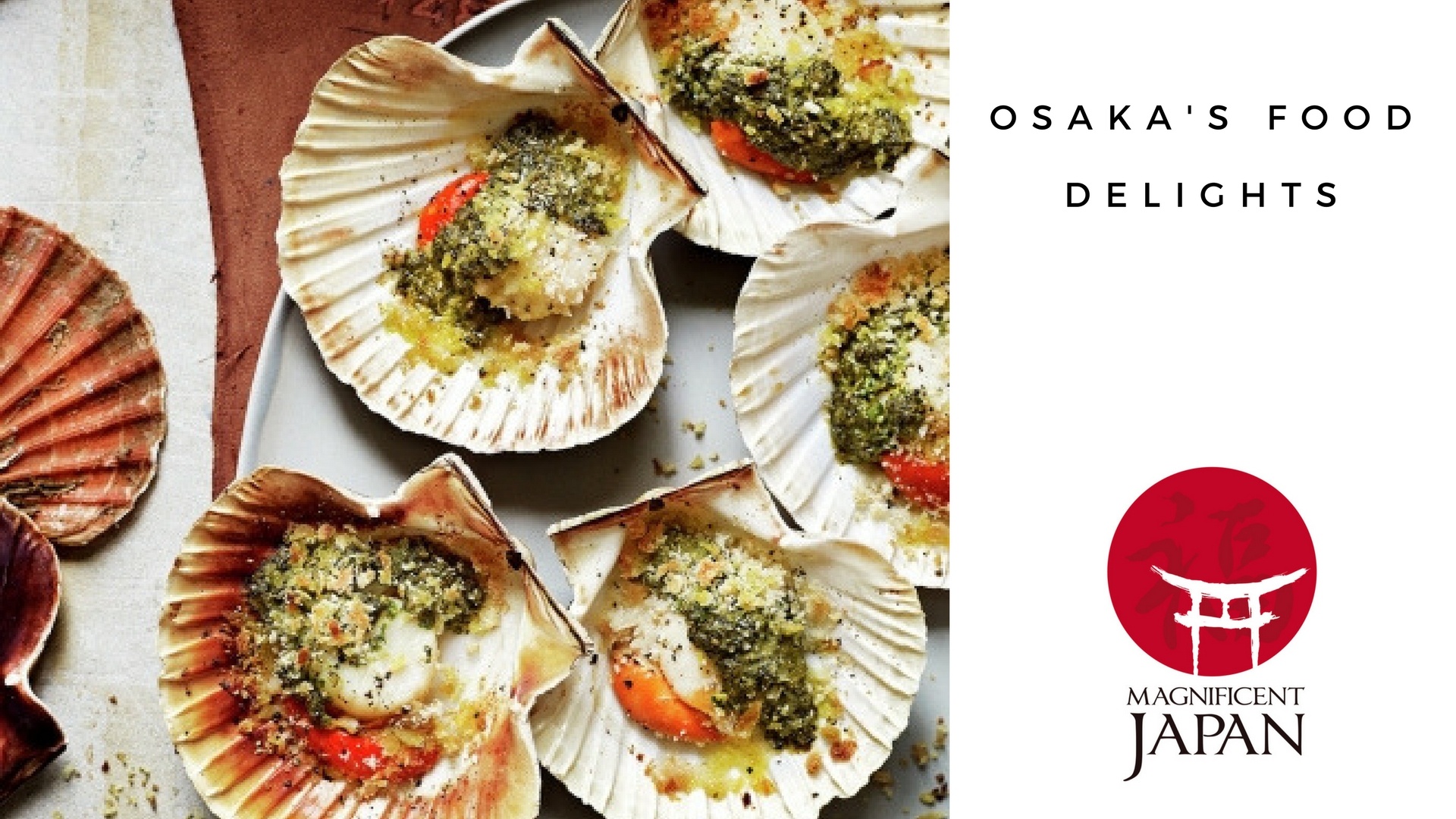Table of Contents
When it comes to exploring the unique cuisine scene in Osaka, there’s one thing that stands out above all else: street food. In this city, there are stalls and vendors selling all kinds of mouth-watering snacks and dishes that are not only delicious but also deeply ingrained in the local food culture. From takoyaki to okonomiyaki and beyond, the Osaka food scene is something that any foodie simply can’t miss.
So, if you’re ready to take a culinary adventure through the streets of Osaka, dig into our Osaka food guide! Osaka’s street food scene is a bustling, vibrant world that you should not miss. Osaka is famous for its “kuidaore” culture, which translates to “eat until you drop.” This means that Osaka’s street food vendors take their food seriously, and you’ll find a wide range of high-quality dishes to try.
Where to Find the Best Street Food in Osaka
Kuromon Market: Osaka Food Market
Japan has one of the greatest cultures of street food that goes beyond the continent. Kuromon Market is on Sakaisujidori Street in the Minami area of Osaka. It is a covered public market that has a total of 150 shops. Kuromon market is Osaka’s street food heaven. It predominantly consists of fish, meat, sweets, clothes, and hardware. Amazing experience especially for a food lover. You can see and experience the specialties of various chefs. Its taste will definitely bring you ecstasy.
Kuromon Market serves large and small portions of the products. Some of the shops provide a small area for patrons who typically buy, stand and eat.
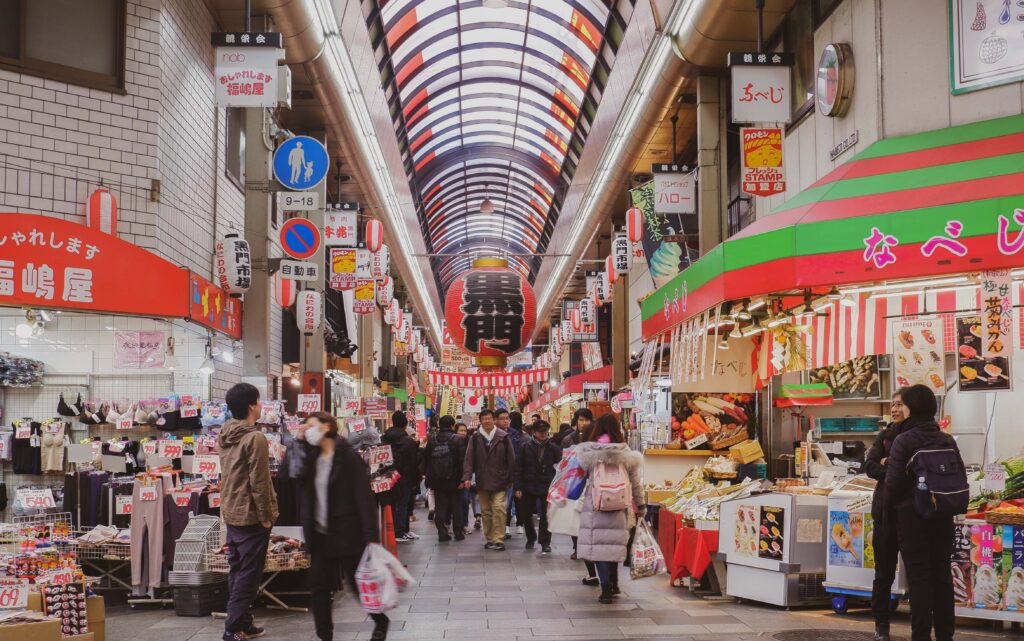
Dotonbori: The Heart of Osaka Food Scene
Dotonbori is considered the heart of Osaka’s food scene and is a must-visit destination for foodies. This vibrant and bustling street is located in the Namba district and is home to some of Osaka’s most famous restaurants and street food vendors. The aroma of sizzling dishes and the colorful neon lights create an electrifying atmosphere. From savory takoyaki to sweet Japanese-style pancakes, Dotonbori has something for everyone.
Shinsekai: A Neighborhood with a Rich Culinary History
Shinsekai, which translates to “New World,” was created in 1912 as an entertainment district for the masses. Since then, it has become a hub for food lovers seeking delicious and affordable bites. The neighborhood is best known for its kushikatsu, deep-fried skewers of various meats and vegetables, and the famous Tsutenkaku Tower, which offers incredible views of the area. Whether you’re a foodie or just looking to explore the city, Shinsekai is definitely worth a visit.
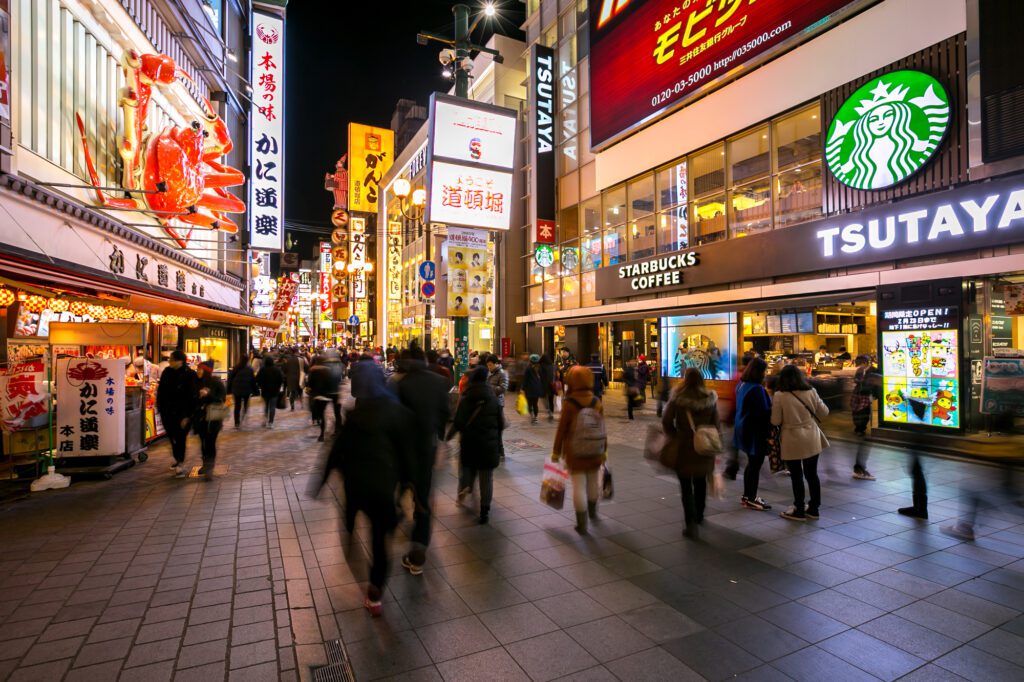
Popular Street Food Dishes in Osaka
Takoyaki: Osaka’s Iconic Octopus Balls
The Japanese call it octopus balls. Literally, it means grilled octopus. Very typical street food for them. It is a ball-shaped Japanese made up of wheat flour and butter. Cooked in a small molded pan and filled with minced and chopped octopus, tempura, ginger, and green onions. Brushed with takoyaki sauce, and mayonnaise, and sprinkled with green laver and shavings of dried bonito. Takoyaki is inspired by akashiyaki, a small round dumpling from the city of Akashiyaki.
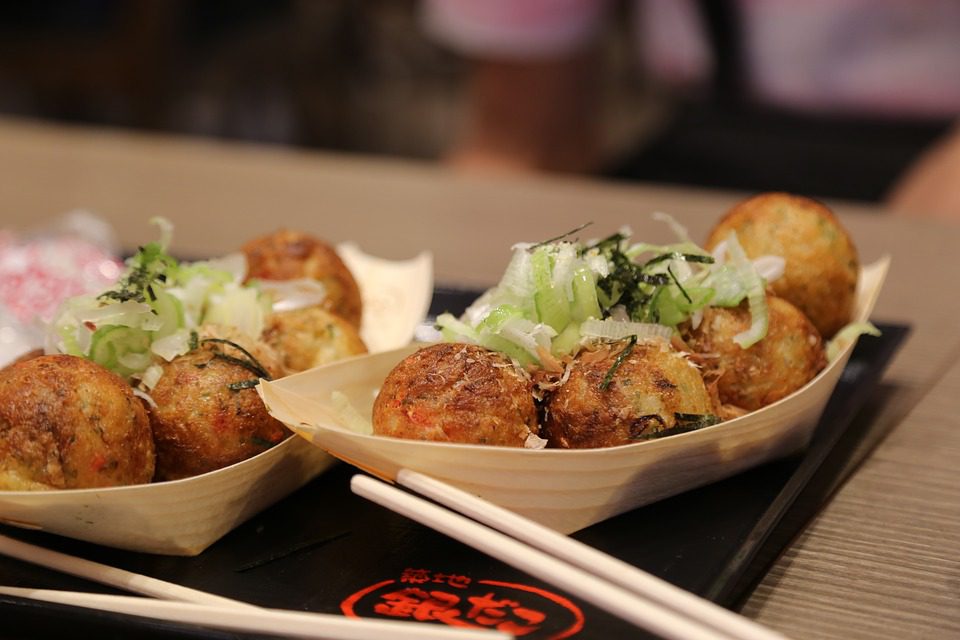
Kushikatsu: Deep-Fried Skewers of Deliciousness
Are you ready to indulge in Osaka’s crispy and delicious street food? Look no further than kushikatsu, a mouth-watering deep-fried skewer that will leave you wanting more! This popular Osaka food consists of various meats, vegetables, and seafood that are skewered, breaded, and deep-fried until golden brown. With its crispy exterior and tender interior, you’ll find that kushikatsu is a mouth-watering delight. So get ready to satisfy your cravings with this tasty and delightful dish!
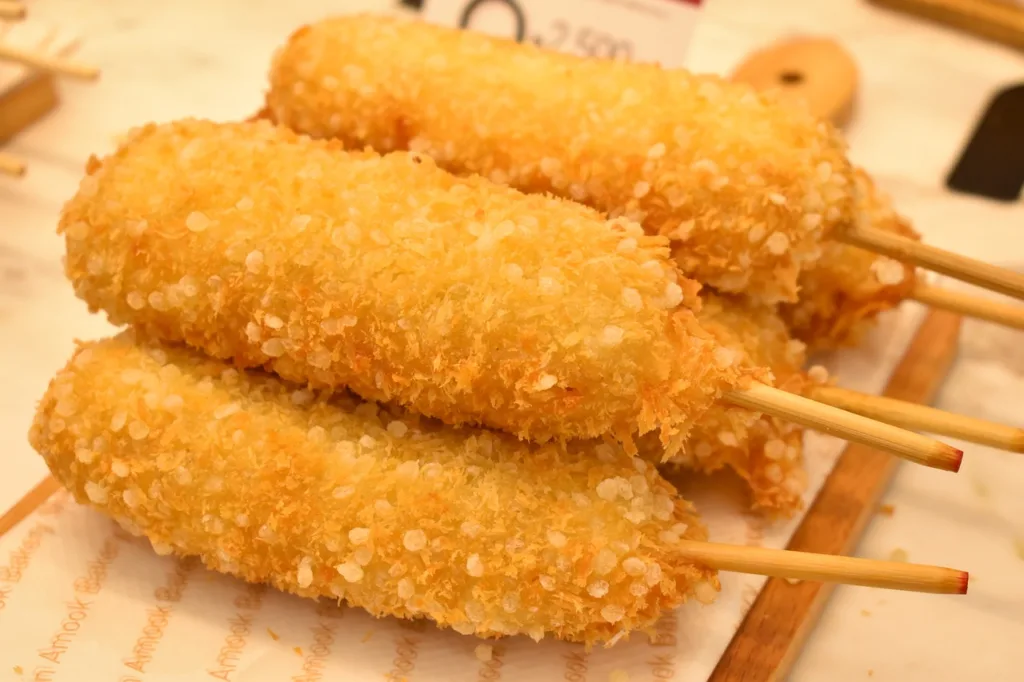
Grilled Scallop: A Must-Try Osaka Delicacy
Grilled scallops are a popular street food item that you can find throughout Osaka. These succulent, sweet scallops are skewered and grilled to perfection and often they serve you with just a splash of soy sauce and a squeeze of fresh lemon. The scallops are so fresh and delicious that they practically melt in your mouth. They are a must-try for any seafood lover visiting Osaka.
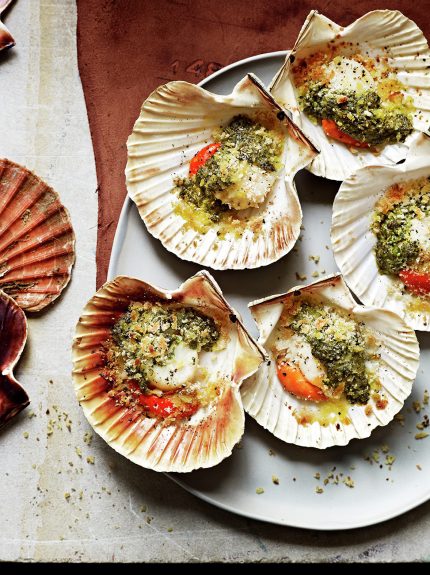
Traditional Osaka Food
You can recognize Osaka’s traditional cuisine through the use of fresh, locally sourced ingredients and simple cooking techniques that highlight the natural flavors of the food.
Key ingredients in Osaka Cuisine
When it comes to Osaka cuisine, the key ingredients that define its flavor profile are dashi, mirin, and soy sauce. They create a unique and distinct flavor profile that is essential to Osaka cuisine. These ingredients are used in countless dishes and are a fundamental part of the city’s culinary heritage.
Dashi
Dashi is a clear broth made from kombu (a type of kelp) and katsuobushi (dried and smoked bonito flakes). This broth is the backbone of many Japanese dishes, including soups, stews, and sauces. In Osaka, it is a crucial ingredient in many local dishes, such as takoyaki and okonomiyaki. The combination of kelp and bonito flakes creates a rich, savory flavor that is the foundation of many dishes.
Mirin
Mirin is another essential ingredient in Osaka cuisine. It is a type of rice wine that has a high sugar content, giving it a sweet taste. It is often used in combination with soy sauce and dashi to create a sauce known as teriyaki. This sauce is brushed onto grilled meats or fish and is a staple in many Osaka restaurants. They use mirin to add sweetness to dishes such as nikujaga (a stew made with meat and potatoes) and tamagoyaki (a type of rolled omelet).
Soy sauce
Finally, soy sauce is a ubiquitous ingredient in Japanese cuisine and you can find it in Osaka dishes as well. Made from fermented soybeans, wheat, salt, and water, soy sauce has a complex umami flavor that adds depth and complexity to many dishes. In Osaka, it is used as a seasoning for many dishes, such as yakitori (grilled chicken skewers) and katsu (breaded and fried meat or fish). It is also used as a dipping sauce for sushi and sashimi and as a flavoring agent in soups and stews.
Classic Osaka food dishes
Many, both tourists and locals, love kushikatsu and yakiniku, two classic Osaka dishes. Kushikatsu is a type of deep-fried skewer that typically contains a combination of meat, vegetables, and seafood. The skewers are coated in flour, dipped in egg, then panko breadcrumbs before being deep-fried to a crispy golden brown. Kushikatsu will serve with a dipping sauce made of soy sauce, Worcestershire sauce, and mustard. One of the unique things about kushikatsu is that customers are expected to only dip their skewers once, to avoid contamination of the sauce all share. While there are many kushikatsu shops in Osaka, the historic Shinsekai district is a particularly popular area to sample this tasty treat.
Yakiniku, on the other hand, is a grilled meat and vegetable dish that originated in Korea but has become a popular staple in Japanese cuisine. Yakiniku restaurants typically have small charcoal grills at each table, where customers can grill their own meat and vegetables to their liking. Popular meats for yakiniku include beef, pork, and chicken, as well as offal such as liver and tongue. The grilled items will serve with a variety of dipping sauces, including soy sauce, ponzu sauce, and sesame sauce. In Osaka, one of the best places to try yakiniku is in the trendy area of Umeda, where you can find both traditional and modern yakiniku restaurants.
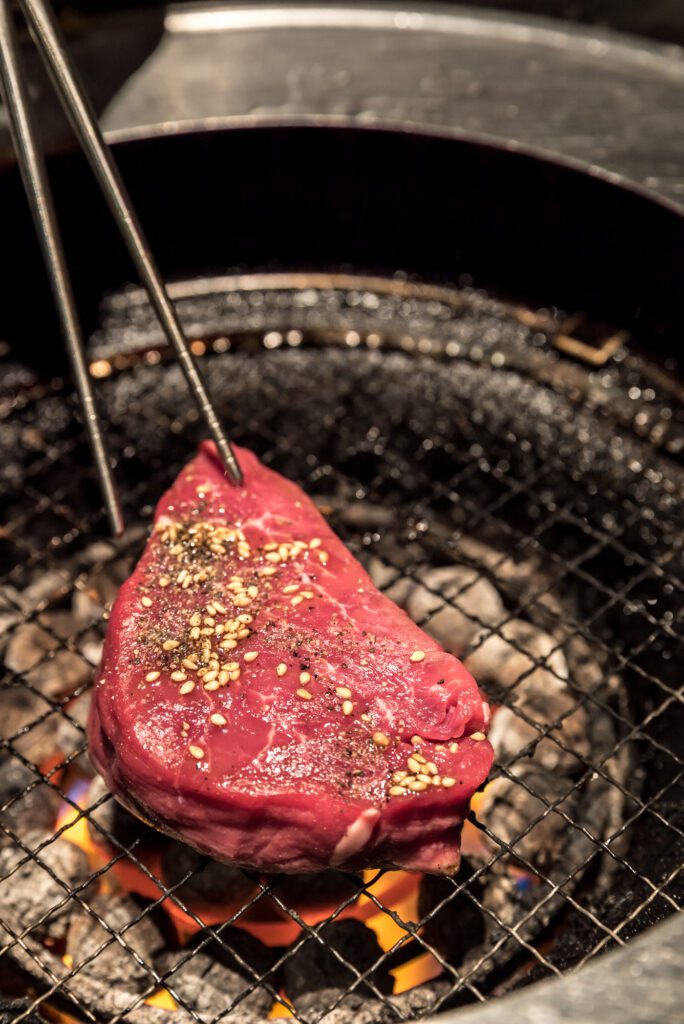
Where to find the best traditional cuisine
When it comes to traditional Osaka cuisine, there are a few must-visit restaurants that locals and visitors alike recommend. One of the most famous and historic restaurants in Osaka is Kitamura, which has been serving sukiyaki since 1881. The restaurant’s cozy and traditional atmosphere makes it the perfect place to experience the classic Japanese hot pot dish.
Another restaurant worth checking out is Ajinoya, which specializes in Osaka’s beloved dish, okonomiyaki. This savory pancake they make with a batter of flour, eggs, and shredded cabbage, and fill with ingredients like pork belly, shrimp, and octopus. Ajinoya’s okonomiyaki is particularly famous for its use of rich and flavorful pork bone broth in the batter, which adds an extra layer of umami to the dish.
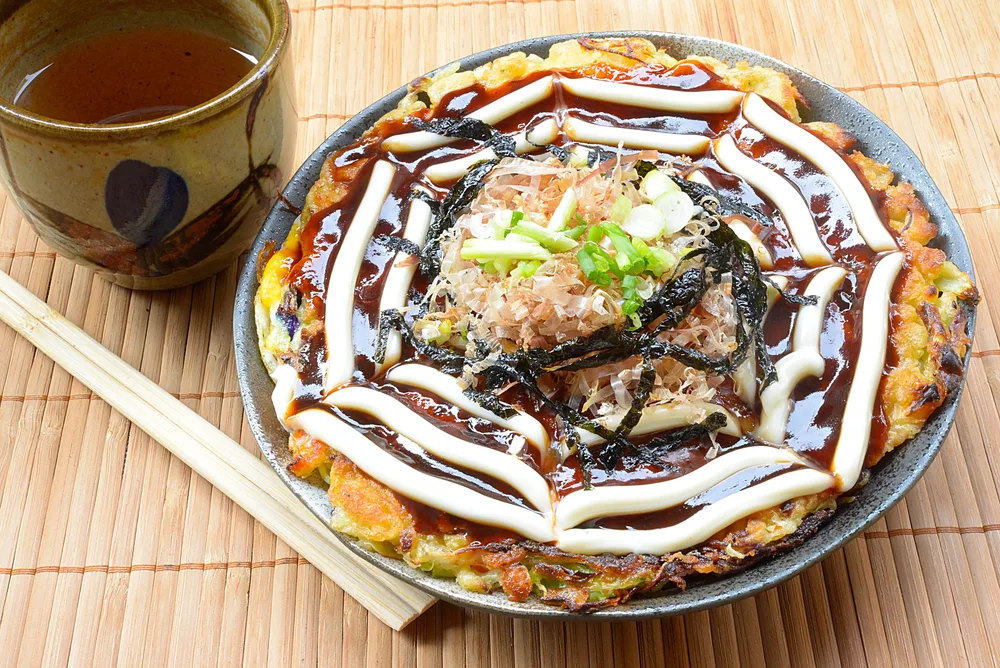
For those looking for a more casual dining experience, Daruma is a popular kushikatsu restaurant. They have been serving deep-fried skewers since 1929. They make kushikatsu with fresh ingredients, including meat, vegetables, and seafood, and serve with a variety of dipping sauces like miso, Worcestershire, and mustard. Daruma’s lively atmosphere and friendly staff make it a great spot for a fun night out with friends.
These restaurants are just a few of the many places to try traditional Osaka cuisine.
Unique Dining Experiences in Osaka
One of the things that makes these unique dining experiences in Osaka special is the opportunity to witness the art of Japanese culinary skills up close. At a kappo-style restaurant, diners sit at a counter and watch as the chef prepares dishes right in front of them. This creates an intimate atmosphere where guests can engage with the chef and ask questions about the ingredients, preparation, and cultural significance of the dishes.
Similarly, izakayas offer a different type of experience, with a casual atmosphere and small plates of food meant for sharing. Izakayas are popular among locals as a place to unwind after work and enjoy some food and drinks. Many izakayas also have a wide selection of alcoholic beverages, from beer and sake to shochu and plum wine, making them a great place to try new drinks and socialize with locals.
Where to find the best unique dining experiences
For a truly unique dining experience in Osaka, Kappo Sakamoto is a must-visit. This Michelin restaurant is famous for its multi-course meals that change with the seasons, and the chef prepares each dish right in front of you. They will beautifully present the dishes and always make them with the freshest, locally-sourced ingredients. We recommend you make a reservation, as there are only a few seats available.
Another great place to experience Osaka’s unique dining culture is Tsuruhashi Fugetsu. It’s a popular izakaya chain with locations throughout the city. Here, you can try a variety of small plates, such as yakitori (grilled chicken skewers), kushikatsu (deep-fried skewers), and takoyaki (octopus balls), along with a wide selection of drinks. The atmosphere is lively and casual, and it’s a great place to meet locals and experience the conviviality of Japanese pub culture.
Osaka’s Sweets and Desserts
Osaka’s sweets and desserts are an essential part of the city’s food culture.
Mochi
Mochi is a classic Japanese sweet that Japanese people enjoy for centuries, and Osaka is no exception. You can find it in many different flavors, such as strawberry, green tea, and even ice cream-filled variations. The most traditional form of mochi is with sweet red bean paste, called “anko” in Japanese. This sticky and chewy dessert is often served during special occasions, such as New Year’s celebrations and festivals. In Osaka, one of the most popular places to enjoy mochi is at the famous Mochibune shop, which has been operating since 1915. Here, you can watch the skilled artisans handcraft the mochi using traditional techniques.
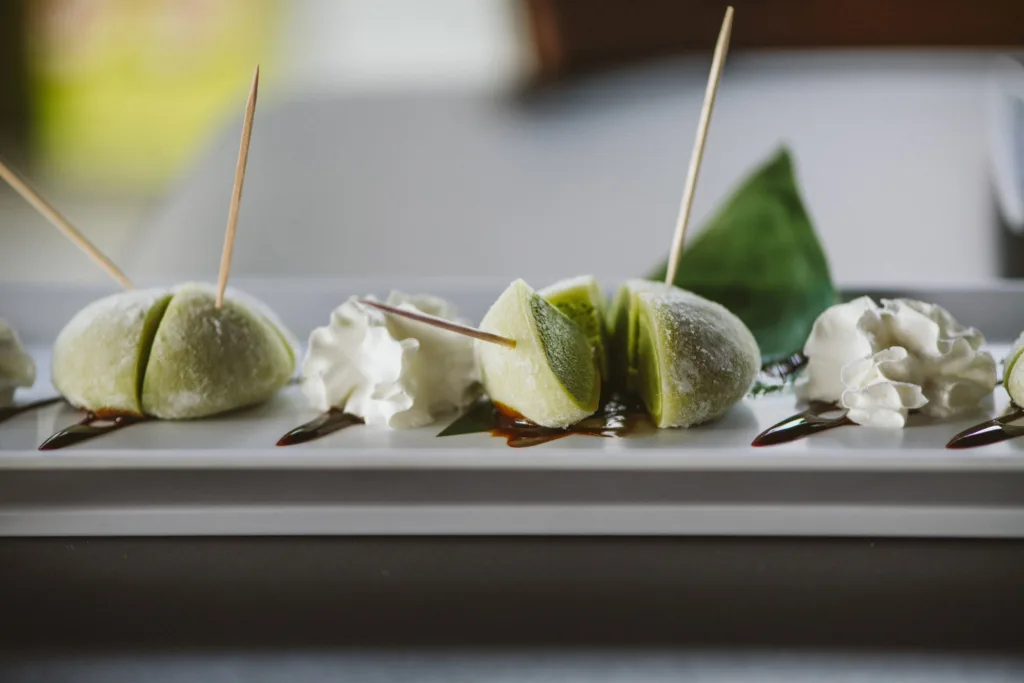
Taiyaki
Taiyaki, on the other hand, is a more recent addition to Osaka’s sweet scene. This fish-shaped cake they make from a batter of flour, sugar, and eggs and is filled with sweet red bean paste, custard, or even chocolate. Taiyaki is cooked on a special griddle, creating a crispy outer shell that contrasts with the soft and gooey filling. You can find taikyaki shops throughout Osaka. Many offer unique and creative flavors, such as matcha, cheese, and even savory versions filled with cheese or sausage.
In addition to mochi and taiyaki, Osaka offers a variety of other sweet treats. Such as dango, a type of sweet dumpling made from rice flour, and kuzu-mochi, a soft and jelly-like dessert made from kudzu root starch. Those with a sweet tooth will find plenty of options to indulge in while exploring the streets of Osaka.

Castella
In addition to mochi and taiyaki, Osaka is also famous for its castella, a type of sponge cake. The cake has a soft and fluffy texture and often comes with honey or other natural ingredients. One of the best places to try castella in Osaka is Bunmeido, a traditional Japanese confectionery that has been in business for over 100 years. The shop offers various flavors of castella, including green tea and chocolate.
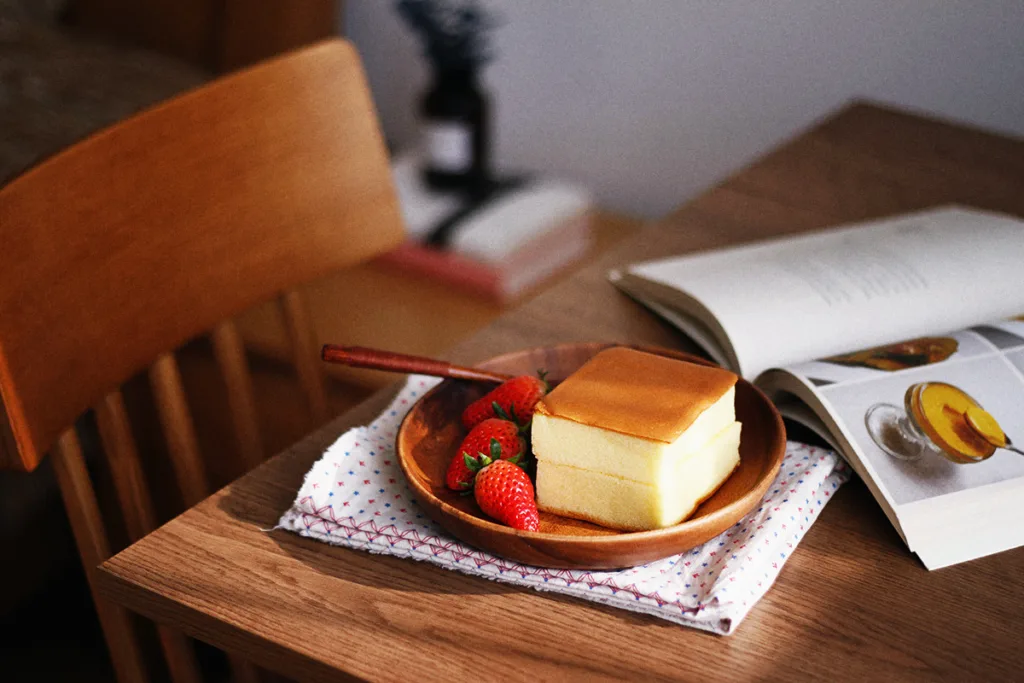
Some of the best places to try Osaka’s sweets and desserts
If you’re looking for the best sweets and desserts in Osaka, Kuromon Market is a great place to start. One standout shop is Mochibuka, which specializes in handmade mochi. Here, you can watch as skilled artisans pound rice flour into soft, pillowy mochi before filling them with a variety of sweet bean pastes. Some of the most popular flavors include matcha, black sesame, and strawberry.
Another must-visit spot in Osaka for sweets is the trendy neighborhood of Americamura, also known as Amemura. Here, you’ll find a variety of cafes and dessert shops, including the popular Pablo Cheesecake. This shop is famous for its fluffy, melt-in-your-mouth cheesecake. It comes in a variety of flavors like original, matcha, and chocolate.
For something a bit more traditional, head to Kameya Yoshinaga. It’s a historic wagashi (Japanese sweets) shop that has been in business since 1860. Here, you can sample a variety of classic Japanese sweets like daifuku (mochi filled with sweet bean paste), manju (steamed buns filled with sweet bean paste), and yokan (a jellied dessert made from red bean paste).
No matter where you go in Osaka, you’re sure to find a wide variety of sweets to try. Whether you’re in the mood for something classic or something trendy, Osaka has something to satisfy every sweet tooth.
Tips for Eating in Osaka
When it comes to dining in Osaka, there are a few customs and etiquette rules you should keep in mind. First off, it’s important to say “itadakimasu” before you start eating. This is a polite way of giving thanks for the food. Similarly, when you finish eating, you should say “gochisosama deshita” to express your gratitude to the cook.
As a foreigner in Osaka, it’s important to have an open mind and be willing to try new things. Osaka has a rich culinary scene, so don’t be afraid to explore beyond your comfort zone!
When it comes to ordering food and drinks in Osaka, it can be helpful to familiarize yourself with some common dishes and ingredients. Many restaurants will have menus with pictures or English translations, but some smaller establishments may only have Japanese menus. If you’re not sure what to order, don’t be afraid to ask the waiter for recommendations!
In terms of drinks, it’s common to order beer, sake, or shochu to accompany your meal. Soft drinks and tea are also widely available. When ordering drinks, it’s polite to pour for others before pouring for yourself. And if someone pours for you, be sure to say “thank you” by tapping two fingers on the table.
Essentials for creating Japanese dishes at home
Essentials you should have in your pantry and kitchen. Here are some of the key ingredients and tools:
- Rice: Japanese cuisine relies heavily on rice, so having high-quality short-grain rice is essential. You will also need a rice cooker or a pot with a lid to cook the rice.
- Soy sauce: Soy sauce is used in many Japanese dishes, from dipping sauces to marinades and stir-fries. You can find different types of soy sauce, including light, dark, and tamari.
- Mirin: Mirin is a sweet rice wine that is used in many Japanese dishes to add flavor and sweetness. It’s an essential ingredient in teriyaki sauce, for example.
- Dashi: Dashi is a basic stock used in many Japanese dishes, such as miso soup, noodle dishes, and sauces. You can buy instant dashi granules or make it from scratch using kombu (dried seaweed) and bonito flakes (dried fish).
- Miso paste: Miso paste is from fermented soybeans and is used to flavor soups, sauces, and marinades. There are several types of miso paste, including white, yellow, and red.
- Wasabi: Wasabi is a spicy green paste that goes with sushi and sashimi. It has a pungent flavor and can be quite spicy.
- Japanese knives: Japanese knives are essential for preparing Japanese dishes at home. They are known for their sharpness and precision.
- Bamboo mat: A bamboo mat is used to make sushi rolls. It’s also handy for rolling out dough and wrapping food.
- Chopsticks: Chopsticks are used for eating most Japanese dishes. They come in different materials, including wood, plastic, and metal.
- Japanese-style plates and bowls: Finally, having some Japanese-style plates and bowls will help you serve your dishes in an authentic way and enhance your dining experience.
With these essentials, you’ll be well on your way to creating delicious Japanese dishes at home.
For those curious to learn more about Japanese Cuisine
For those curious to read more about Washoku, the traditional cuisine of Japan, there are several excellent books available that delve into the history, culture, and techniques behind this fascinating culinary tradition. Here are five top book recommendations:





So why not plan a trip to Osaka and experience the foodie paradise for yourself?
If you’re a food lover, Osaka is a must-visit destination that should be on your travel bucket list. With its incredible street food scene, unique dining experiences, and traditional cuisine, Osaka has something to offer every palate.
